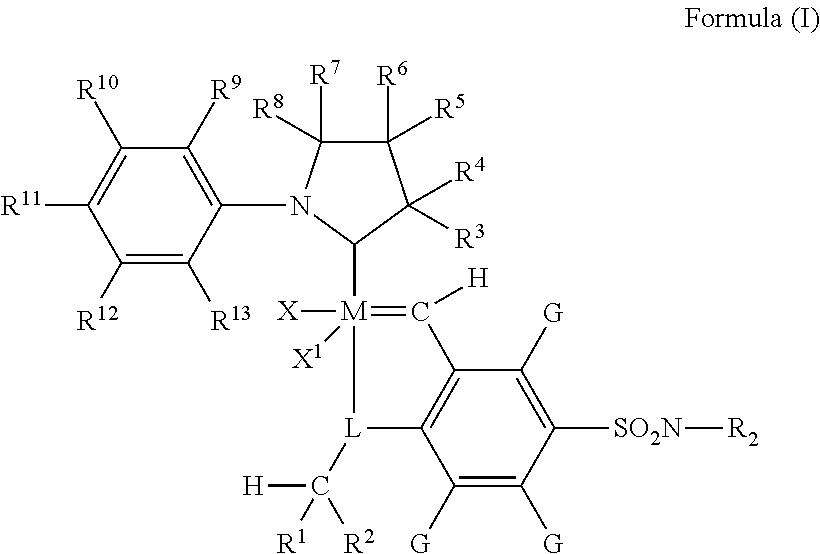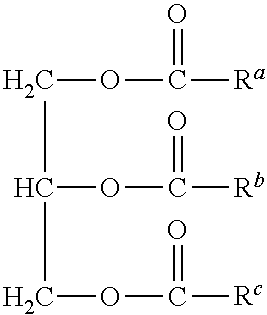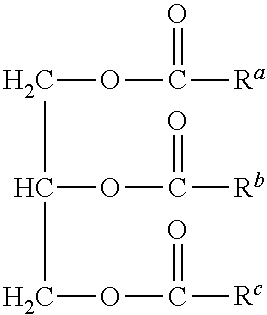Metathesis catalyst and process for use thereof
a technology of metal catalysts and catalyst compounds, applied in the field of metal catalyst compounds, can solve the problems of ineffective internal olefins containing functional groups, heterogeneous catalysts, tungsten and rhenium oxides, and lack of similar strategies for the production of 1-decen
- Summary
- Abstract
- Description
- Claims
- Application Information
AI Technical Summary
Benefits of technology
Problems solved by technology
Method used
Image
Examples
synthesis example 1
[0108]Synthesis of (E)-2,6-diethyl-N-(2-methylpropylidene)aniline (compound 1). Benzene (150 mL) was added to 2,6-diethylaniline (18.59 g, 124.6 mmol) and 3 angstrom molecular sieves (ca. 50 mL). Then isobutyraldehyde (9.43 g, 131 mmol) and p-toluenesulfonic acid monohydrate (20 mg, 0.011 mmol) were added. The flask was sealed and heated to 50° C. After stirring overnight the very pale yellow solution was filtered and the volatiles were removed under reduced pressure to afford the product as a clear, pale yellow oil. Yield: 22.5 g, 84.6%. 1H NMR (C6D6): δ 7.21 (1H, d), 7.02 (2H, m), 2.47 (4H, q), 2.39 (1H, m), 1.11 (6H, t), 1.01 (6H, d).
[0109]Synthesis of lithium (2,6-diethylphenyl)(2-methylprop-1-enyl)amide (compound 2). Benzene (70 mL) and compound 1 (6.63 g, 32.6 mmol) were combined. Then solid lithium diisopropylamide (4.01 g, 37.4 mmol) was added. The mixture was heated to 50° C. to form a cloudy red-orange solution. After a few hours the solution was filtered through diatomace...
example 1
[0112]A stock solution was made by dissolving 4.5 mg of 2-(2,6-diethylphenyl)-3,3,5,5-tetramethylpyrrolidine[2-(i-propoxy)-5-(N,N-dimethylaminosulfonyl) phenyl]methylene ruthenium dichloride in 25 mL anhydrous dichloromethane. 1.0 mL (0.87 g) methyl oleate, 1.26 g (125 nmol catalyst) of catalyst stock solution, 3.7 g anhydrous dichloromethane, and 0.152 g (0.2 mL) tetradecane as an internal standard were weighed out and then placed in a Fisher-Porter bottle equipped with a stir bar. The vessel was then filled with ethylene to 150 psig (1034 kPa) and placed in an oil bath heated to 40° C. for 2 hours. After completion the vessel was depressurized and approximately 0.5 mL ethyl vinyl ether was added to stop the reaction. A sample was then taken and analyzed by GC as described above.
example 2
[0113]This example was run according to the procedure in Example 1, except that the amount of catalyst for this run was halved such that 0.63 g (62.5 nmol catalyst) of catalyst stock solution was added along with 4.4 g anhydrous dichloromethane. The amount of methyl oleate (1.0 mL, 0.876 g) and tetradecane standard (0.2 mL, 0.152 g) remained the same. The reactants were placed in a Fisher-Porter bottle and into a 40° C. oil bath for 2 hours, after which ethyl vinyl ether was added to stop the reaction. A sample was taken and analyzed by GC as described above.
PUM
| Property | Measurement | Unit |
|---|---|---|
| contacting time | aaaaa | aaaaa |
| contacting time | aaaaa | aaaaa |
| contacting time | aaaaa | aaaaa |
Abstract
Description
Claims
Application Information
 Login to View More
Login to View More - R&D
- Intellectual Property
- Life Sciences
- Materials
- Tech Scout
- Unparalleled Data Quality
- Higher Quality Content
- 60% Fewer Hallucinations
Browse by: Latest US Patents, China's latest patents, Technical Efficacy Thesaurus, Application Domain, Technology Topic, Popular Technical Reports.
© 2025 PatSnap. All rights reserved.Legal|Privacy policy|Modern Slavery Act Transparency Statement|Sitemap|About US| Contact US: help@patsnap.com



